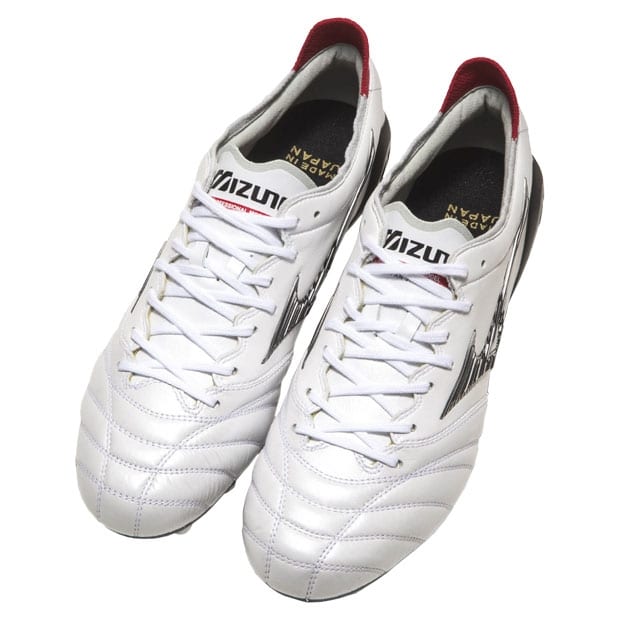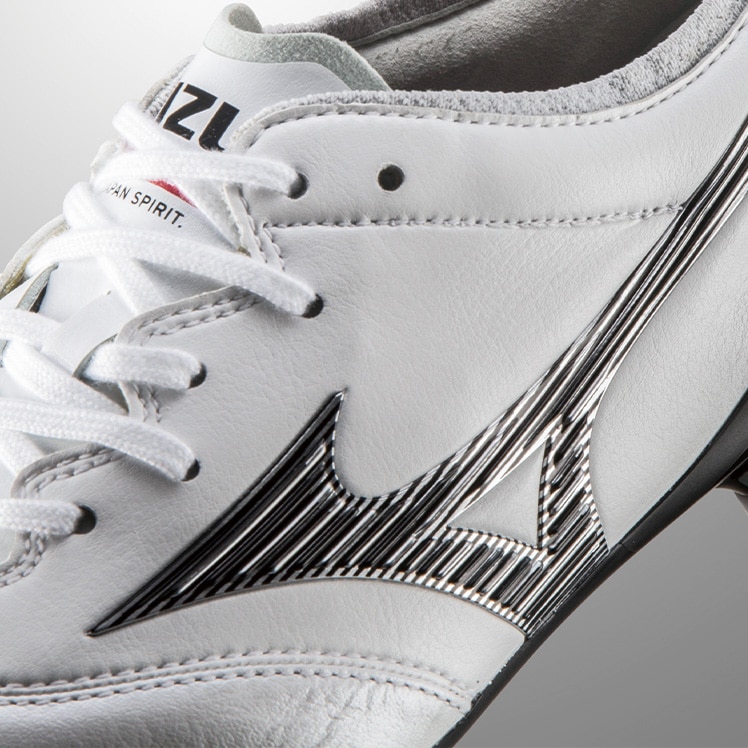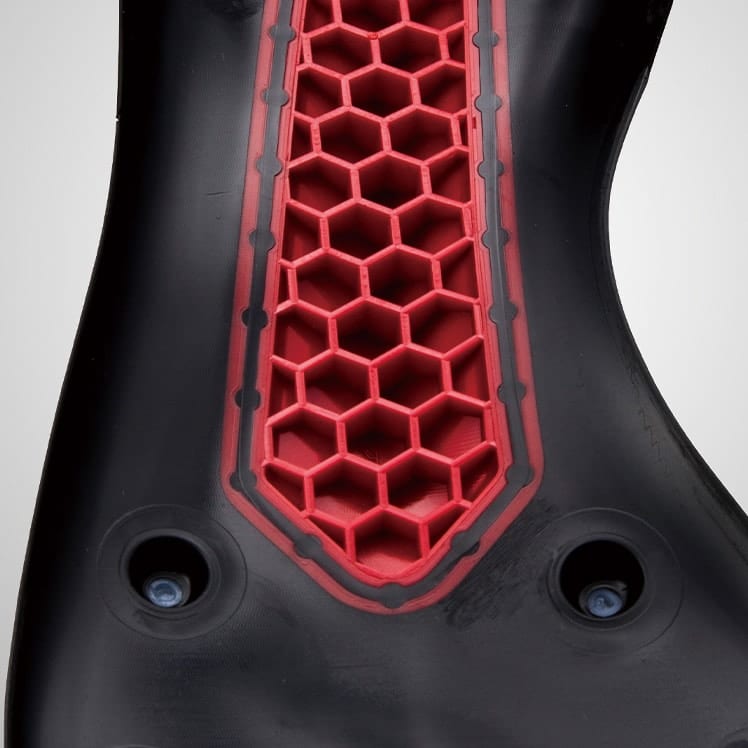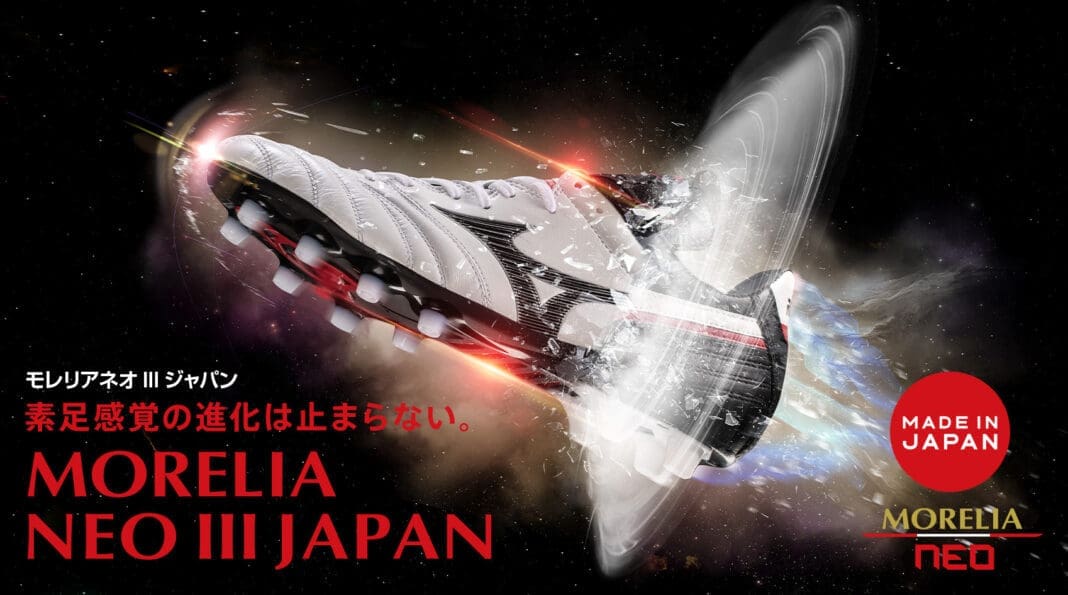Mizuno reveals its finely tuned speed machine.
If you’ve ever visited Japan, it feels like an amazingly surreal world, different from the rest of the globe and one that plays by its own rules. The Japanese football boot market is no different. They seem to not have moved on to modern synthetics and knit as their love affair with leather continues and has grown stronger with the times.
Mizuno’s Made in Japan line is testament to that level of quality so much so that their football boots have hardly been updated. The Mizuno Morelia Neo 2 has been around since 2016 and it didn’t even have too many updates from the first generation that launched in 2011. The fact that the Morelia Neo 2 has aged well despite other brands having 1.5 year cycles for their boot updates is proof of Mizuno’s excellence.
Towards the end of 2019, the Japanese boot makers introduced us to the Morelia Neo 2 Beta, a concept boot that gave us a tease of the Neo 3. It didn’t reinvent the wheel but it definitely improved on it. Mizuno has finally revealed the latest Mizuno Morelia Neo 3 and we decide to take a look at what’s under the hood.
Evolution of the Neo
At first glance, the boot has had very little changed from its predecessors. Just like a finely tuned F1 car, Mizuno felt that the product didn’t need an overhaul – only incremental improvements in all parts were required to make it better.


Expect to see many of the same parts with slight tweaks which combine collectively to provide an improved experienced. With the Morelia Neo 3 being their flagship speed boot, much of the focus has been on reducing weight and a closer touch to the ball.
The fit and last
One of the biggest changes on the Morelia Neo 3 is the change in the last. For those unfamiliar with a “last”, it’s the mould that gives the boot its shape. The last is a huge part of Mizuno’s Made in Japan line’s production process as they have the last inserted in the boot for 24 hours, significantly more than most boot brands out there, to provide a better fit.


This new last, the “Engineered Fit Last NEO”, includes a slightly higher toebox for more space and comfort. Expect Mizuno to also build the Morelia Neo 3 in larger sizes (up to US 12) now that their brand is getting more acclaim outside of Asia. That said, we’re not sure if the Morelia Neo 3 will still be narrow like its previous versions.
“Bare Foot” Leather and Knit
Mizuno’s focus is on a more barefoot feel and aside from the already thin forefoot, they’ve set their eyes upon improving the feel higher up the foot. They’ve switched out the artificial leather material in the mid-foot for another faux leather upper, BF (Bare Foot) Leather, that aims to be as soft as natural leather.


They’ve also embraced knit, aptly named BF (Bare Foot) Knit, to be implemented around the entrance of boot for comfort and to reduce any chances of blistering. Mizuno’s dedication to a more natural feel in this area can also be seen with a softer, thinner material used for the sewn on Runbird logo.
Outsole build for durability
There are some fascinating improvements with the outsole, one of them being an often overlooked feature – the flexing point of the boot. To avoid wear and tear, the outsole includes a slight curvature around that area to reduce pressure on area connecting the upper and sole.
We see a much more modern honeycomb design through the spine of the Morelia Neo 3, all in the name of weight savings (a mere 5g) while rigidity for a snapback feel. The resin in the studs have also been reinforced as Mizuno promises that their studs are 1.5 more durable than before – definitely with an eye to the Japanese HG fields and growing global popularity of AG pitches.


Sharp-eyed MIJ enthusiasts will notice the removal of rivets that are synonymous with the Made in Japan series. Usually a symbol of its durability, Mizuno has so much faith in their production process and the quality of their bonding glue that they’ve done without them. Time will tell if this was a big mistake but hey, at least it removes an eyesore on a beautiful soleplate.
Heel
The height of the top of the heel has been raised slightly to help lock the rear part of the foot in. The Morelia Neo 3 also has the stitching construction that locks the upper to itself now located on the rear of the heel instead of on the sides towards the rear as was found in previous generations. This was done because Mizuno found that the previous models had a tendency to be loose for some people because of where the stitching was located and led to a loss of lockdown.


The heel cup has been slightly lowered at the rear so that the heel is more stable on the sides. This also has the added effect of decreasing pressure on hot spots in the heel. And to round up the heel, the Morelia Neo 3 has increased cushioning in this section to allow for more comfort and to increase the locked-in feeling.
Other subtle tweaks
I always felt that Mizuno had the best laces in the industry. They’re exceptionally soft which makes tightening them easy and reduces the risk of your laces coming loose mid-game. They have improved on this by making their laces a little bit sleeker too, narrowing it to 4mm from its previous 6mm width. The deepest lace holes also inch closer to your ankle, providing a tighter lockdown if need be.
And finally, the “Bioguard CG-X” anti-bacterial insoles. The Japanese big on hygiene and cleanliness and I like how thoughtful they were with the production off these insoles that are meant to keep your feet fresher for longer.
The Evergreen Morelia Neo 3
I’m surprised that fans have been so hyped up for the Mizuno Morelia Neo 3 despite how it’s still pretty much the same boot after close to 10 years. It’s more impressive when you think about how we’ve all been spoilt by flashy marketing and new innovations regularly.
On the surface, the Mizuno Morelia Neo 3 isn’t much to write home about. The boot is a bit more accommodating in shape, improves in durability and has some updates in the midfoot material. By today’s standards, this is merely a simple facelift. But yet, boot nerds everywhere have been creaming their pants over this.


Therein lies Mizuno’s charm. It’s a company that has been content to leave aside popularity and hype to build the best boot they can, even if they don’t follow industry conventions. They’re a maverick, not caring about market trens as long as they can be proud of what they produce.
People buy Mizuno boots not just because they’re good, but because of what they represent – quality and home comforts. We’ve not received a set yet for review but I can imagine that the Morelia Neo 3 won’t be radically too different on feet to the Neo 2. However, we won’t care because just like its predecessors, we expect the boots to still leave us wholly satisfied.
Special thanks to the Gaijin Boot Blog for further reporting on this article.




I hope the price for the MIJ Neo 2 will decrease now that this is realeased
Mizuno Morelia Neo 3 is for the purist.
Mizuno Morelia Neo 3 BETA is where the innovation lies. Please do a review on that !
We’ll do our best to get our hands on a pair. 🙂
Where can I buy a pair
Hi Sergio,
Where are you based in? We’re not sure of their launch dates outside of Asia but you can try the official Mizuno.com site in your region. Alternatively, I know our friends at Tokyo Football will be bringing them in to Singapore and they ship worldwide. They should be in by end of June.
You can find Tokyo Football’s site here: https://shopee.sg/tokyo_football